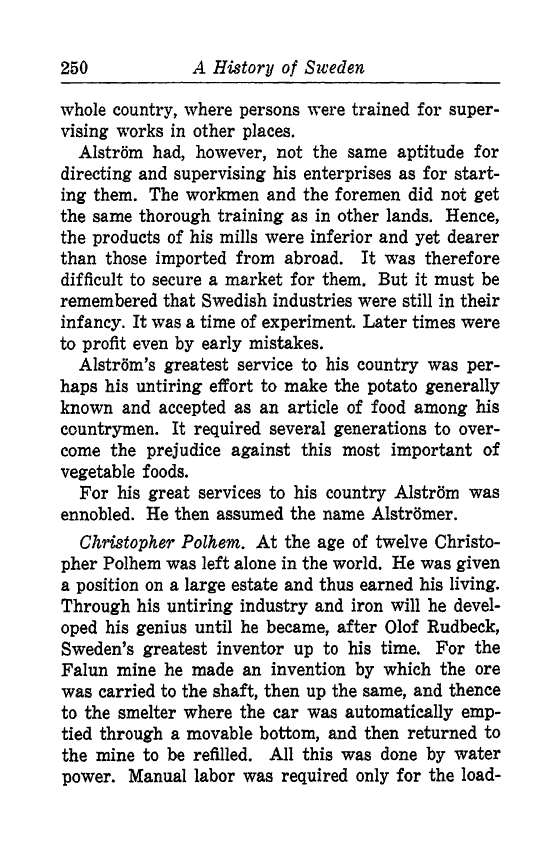
Full resolution (TIFF) - On this page / på denna sida - XIV. Reign of Ulrica Eleonora and Frederick I, 1719–1751 - D. Administration of Arvid Horn

<< prev. page << föreg. sida << >> nästa sida >> next page >>
Below is the raw OCR text
from the above scanned image.
Do you see an error? Proofread the page now!
Här nedan syns maskintolkade texten från faksimilbilden ovan.
Ser du något fel? Korrekturläs sidan nu!
This page has never been proofread. / Denna sida har aldrig korrekturlästs.
250 A History of Siveden
whole country, where persons were trained for super-
vising works in other places.
Alstrom had, however, not the same aptitude for
directing and supervising his enterprises as for start-
ing them. The workmen and the foremen did not get
the same thorough training as in other lands. Hence,
the products of his mills were inferior and yet dearer
than those imported from abroad. It was therefore
difficult to secure a market for them. But it must be
remembered that Swedish industries were still in their
infancy. It was a time of experiment. Later times were
to profit even by early mistakes.
Alstrom’s greatest service to his country was per-
haps his untiring effort to make the potato generally
known and accepted as an article of food among his
countrymen. It required several generations to over-
come the prejudice against this most important of
vegetable foods.
For his great services to his country Alstrom was
ennobled. He then assumed the name Alstromer.
Christopher Polhem. At the age of twelve Christo-
pher Polhem was left alone in the world. He was given
a position on a large estate and thus earned his living.
Through his untiring industry and iron will he devel-
oped his genius until he became, after Olof Rudbeck,
Sweden’s greatest inventor up to his time. For the
Falun mine he made an invention by which the ore
was carried to the shaft, then up the same, and thence
to the smelter where the car was automatically emp-
tied through a movable bottom, and then returned to
the mine to be refilled. All this was done by water
power. Manual labor was required only for the load-
<< prev. page << föreg. sida << >> nästa sida >> next page >>